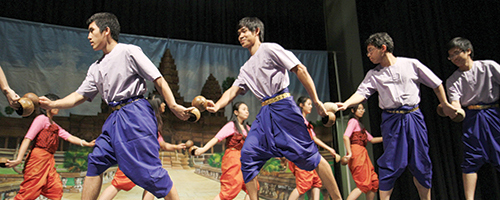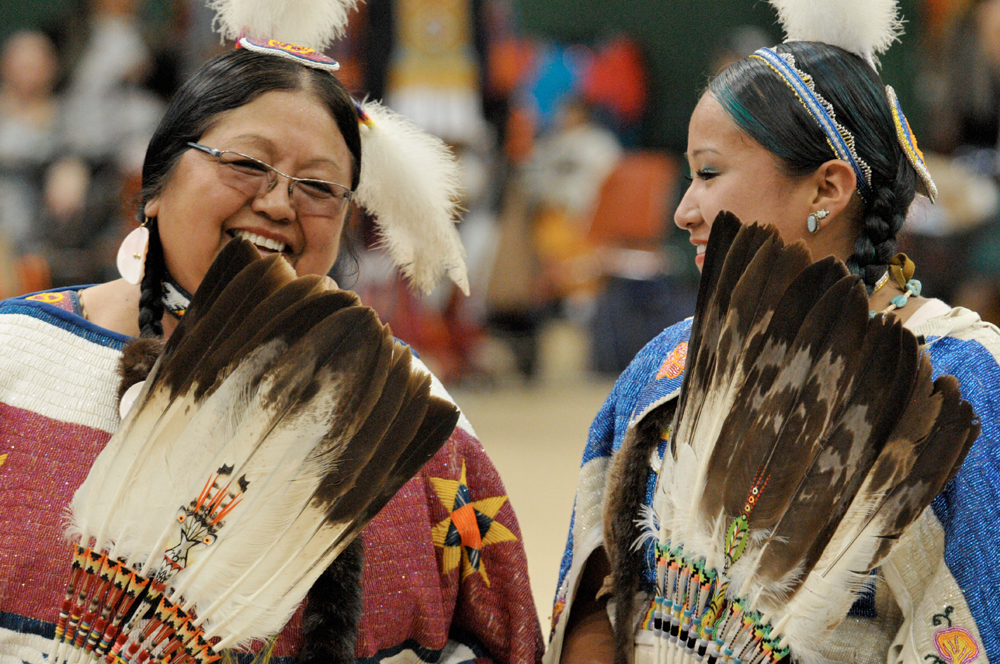On Sunday, Portland State students, faculty and community members waited in line in front of the Smith Memorial Student Union ballroom to experience Cambodian culture at the Cambodian Culture Show put on by PSU’s Cambodian Student Association.
Cambodian song and dance in the spotlight
[portfolio_slideshow id=49639]
On Sunday, Portland State students, faculty and community members waited in line in front of the Smith Memorial Student Union ballroom to experience Cambodian culture at the Cambodian Culture Show put on by PSU’s Cambodian Student Association.
This is CSA’s first year back at PSU after a few years’ absence. The Cambodian Culture Show was the group’s largest event this year, put on to celebrate and spread awareness of Cambodian culture.
“Cultural education is so important,” said Dechen Dolkar, a master of ceremonies for the evening and CSA’s public relations coordinator. “There are little kids here, and older people, and we just want them to know that this culture is still being preserved and we are still practicing it—it’s not gone.”
The theme this year was the lotus flower, representing renewal and the beginning of good things.
The evening opened with a buffet of authentic Cambodian cuisine catered by Mekong Bistro.
“We wanted to stay as authentic as possible, and Mekong Bistro is one of only two authentic Cambodian restaurants in Portland,” CSA President Malisa Tep said.
Dechen took the stage with the other master of ceremonies, Sokho Eath, to introduce Cam Bunna and Kanjunac Myers, who sang the Cambodian national anthem.
The Cambodian Dance Troupe of Oregon performed the traditional Cambodian “Blessing Dance.” The dance, usually performed at the beginning of ceremonies and events, is meant to bless and give good luck to the event and the audience. The performers wore traditional gold-and-ivory dresses and gold headpieces.
The headliner of the evening was Miss Cambodia, Phanith Rama Sovann. Sovann was invited to be a spokesperson and performer at the event.
She took the stage to formally start the festivities with a speech in which she praised the club and their ambitious plans.
“These students, they wanted to do something [to bring] Cambodia’s culture to the forefront of public thought…and I think it very much embodies the lotus flower, the theme of renewal and the beginning of something good. So thank you for coming up with CSA and having the boldness to go ahead and make it a reality.”
The audience then enjoyed an array of song and dance performances.
The “Coconut Dance,” the first performance by PSU’s CSA members, is an old folk dance representing love between a boy and a girl. The students wore sarongs or pantaloons called k’bins and traditional folk costumes.
“Cambodia is a very poor country, and so our country uses whatever we have around—like back in the day there were coconuts, so we started making a dance out of it, and same with the ‘Bamboo Dance,’” Tep said.
The “Bamboo Dance,” a fast-paced dance that incorporates stick beaters, was the second performed by CSA members. The traditional folk dance originated in the Philippines. “The king of Cambodia visited the Philippines and kind of incorporated that dance in Cambodia and made it our own,” Tep said.
To celebrate the Cambodian New Year on April 14, Bunna and Chounlie Tep sang (in Khmer, the official language of Cambodia) “Tep Thida Moha Sangkran,” a song celebrating the first day of the new year.
The showstopper of the evening was the fashion show. Attendees watched as 16 couples walked down the stage wearing traditional Cambodian wedding and royal palace servants’ attire. “[I]n Cambodia, in the royal palace, the servants wear a different color for each day,” Tep said.
To end the event, Miss Cambodia took the stage again to sing a mix of Khmer and English songs, from Maroon 5’s “Daylight” to Samdech Chuon Nath’s “Savada Khmer.” Her last song was a rendition of Michael Learns’ “Take Me To Your Heart” sung in Khmer and English.
Miss Cambodia ended the evening with a warm farewell.
“Please keep the Khmer love going, and may you always keep searching for the deep roots of the Cambodian culture.”








I am actually the Cultural coordinator of CSA (not the PR coordinator).